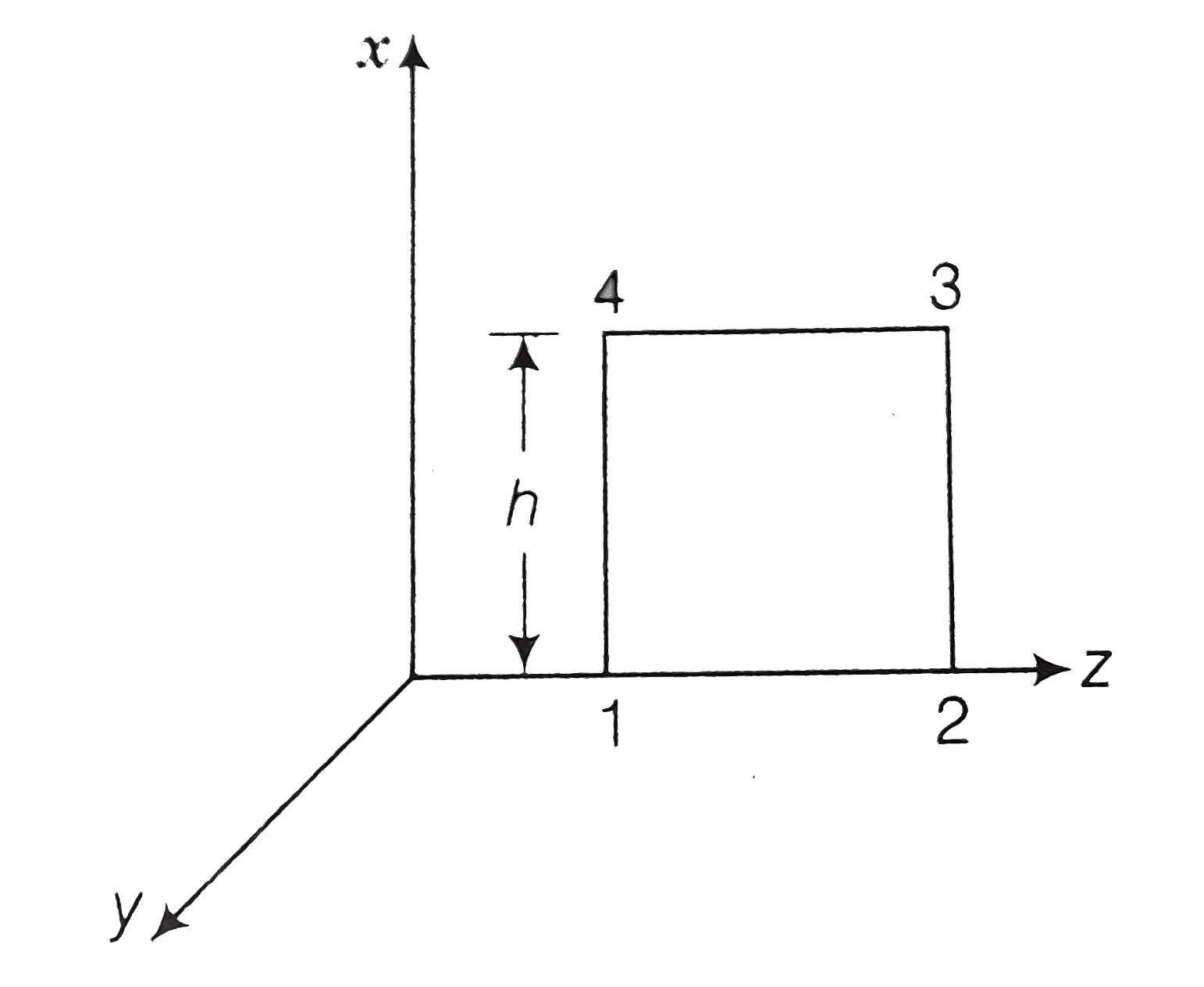An EM wave travels in vacuum along z direction:
→E=(E1ˆi+E2ˆj)cos(kz−ω). Choose the correct option from the following :
The associated magnetic field is given as
B=1C(E1ˆi−E2ˆj) cos (kz−ωt)
The associated magnetic field is given as
B=1c(E1ˆi−E2ˆj) cos (kz−ωt)
The given electromagnetic field is circulary polarised
The given electromagnetic wave is plane polarised
The correct Answer is:D
Here, in electromagnetic wave the electric field vector is given as ,
E=(E1ˆi+E2ˆj cos (kz−ωt)
in electromagnetic wave ,the associated magnetic field vector.
B=EC=E1ˆi+E2ˆjC cos (kz−ωt)
Also E and B are perpendicular to each other and the propagation of electromagnetic wave is perpendicular to E as well as B so the given electromagnetic wave is plane polarised.
Topper's Solved these Questions
Similar Questions
A plane EM wave travelling in vacuum along z-direction is given by E=E0 sin (kz−ωt)ˆi and B=B0 sin (kz−ωt)ˆj
(i) Evaluate ∫E.dl over the rectangular loop 1234 shown in figure.
(ii) Evaluate ∫B.ds over the surface bounded by loop 1234.
(iii) Use equation ∫E.dl=−dϕBdt to prove E0B0=c.
(iv) By using similar proces and the equation
∫B.dl=μ0I+ε0dϕEdt, prove that c1√μ0ε0
 View Solution
View SolutionA plane EM wave travelling in vacuum along z-direction is given by E=E0 sin (kz−ωt)ˆi and B=B0 sin (kz−ωt)ˆj
(i) Evaluate ∫E.dl over the rectangular loop 1234 shown in figure.
(ii) Evaluate ∫B.ds over the surface bounded by loop 1234.
(iii) Use equation ∫E.dl=−dϕBdt to prove E0B0=c.
(iv) By using similar proces and the equation
∫B.dl=μ0I+ε0dϕEdt, prove that c1√μ0ε0
 View Solution
View Solution
Knowledge Check
- Question 1 - Select One
An e.m. wave trevels in vacuum along z direction:
→E=(E1ˆi+E2ˆj)cos(kz−ωt). Choose the correct option from the following :AThe associated magnetic field is given as →B=1c(E1ˆi+E2ˆj)cos(kz−ωt)BThe associated magnetic field is given as →B=1c(E1ˆi−E2ˆj)cos(kz−ω)CThe given electromagnetic field circular polarisedDThe given e.m. wave is plane polarised - Question 2 - Select One
An electromagnetic wave travelling along z-axis is given as E=E0 cos (kz−ωt). Choose the correct options from the following
AThe associated magnetic field is given as →B=1cˆk×→EBThe e.m. wave field can be written in terms of the associated magnetic field as →E=c(→B×׈k)Cˆk.→E=0,ˆk.→B=0Dˆk×→E=0,ˆk×→B=0 - Question 3 - Select One or More
An electromagnetic wave travelling along z-axis is given as E=E0 cos (kz−ωt). Choose the correct options from the following
AThe associated magnetic field is given as B=1cˆk×E=1ω(ˆk×E)BThe electromagnetic field can be written in terms of the associated magnetic field as E=c(Bxˆk)Cˆk.E=0,ˆk.B=0Dˆk×E=0,ˆk×B=0
A plane electromagnetic wave travels in vacuum along z-direction. What can you say about the direction of electric and magnetic field vectors ?
View SolutionA plane electromagnetic wave travels in vacuum along z- direction. What can you say about the directions of ots electric and magnetic field vectors. If the frequency of the wave is 30MHz, what is its wavelength?
View SolutionA plane EM wave travelling along z direction is described by
E=E0sin(kz−ωt)ˆiandB=B0sin(kz−ωt)ˆj.
show that
(i) The average energy density of the wave is given by uav=14ε0E20+14B20μ0.
(ii) The time averaged intensity of the wave is given by Iav=12cε0E20.View SolutionA plane polarized monochromatic EM wave is traveling in vacuum along Z direction such that at t=t1 it is found th at the electric field is zero at a spatial point z1 The next zero that occurs in its neighborhood is at z2 The frequency of the electromagnetic wave is :
View Solutionchoose e correct option w.r.t. leg- haemoglobin
View Solution

